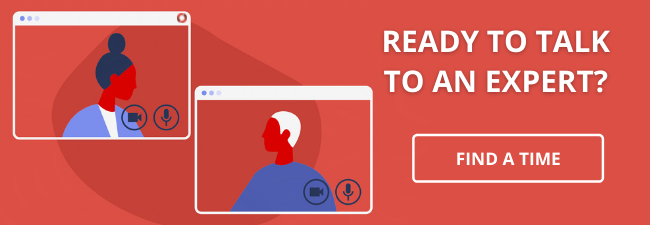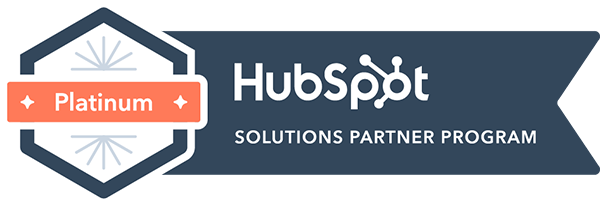
A patient acquisition funnel helps you find new prospective patients, introduce them to your practice and sign them on as new patients automatically. A well-functioning patient acquisition funnel can work round the clock, saving your team precious time and energy.
It might sound too good to be true, but the truth is that the most effective, efficient patient acquisition funnels do take a lot of upfront planning and prep work. But once it’s set up, a well-crafted funnel can be a major boon in the growth of your practice. Here is a quick guide to help you get started:
What is a Patient Acquisition Funnel?
In business, “lead generation” is the process of finding new clients and introducing them to your business. They become a lead when they express an interest in your business. In healthcare, 'patient acquisition' is the more common vernacular. That could look like someone signing up for your newsletter, downloading your free ebook, attending a free event, etc. A prospective patient has expressed interest, but they haven’t become a full blown patient yet.
The “funnel” can take someone from a prospect to a new patient, but there are important steps along the way.
Patient acquisition funnels are often compared to dating. You probably wouldn’t propose marriage on the first date. There are key steps in relationship building that help you build an enduring connection.
It’s a similar process with a patient acquisition funnel.
Healthcare Lead Magnets
Before you can attract prospective patients, you have to offer something that makes people want to get to know your practice a little better. That’s where a lead magnet comes in.
A lead magnet offers something valuable for free, that can introduce your practice and expertise to people without a major commitment. Typically, the only cost to your prospective patient is that they share their email address or sign up for your newsletter list.
Here are some potential lead magnets that work for a healthcare website:
Ebooks: Choose a topic that makes sense for your audience, and write a quick guide that people might be interested in. Simple topics like recipes for healthy eating, first aid basics or managing the common cold work great; don’t feel like you have to create something deeply complex. It doesn’t have to be very long, either. The sweet spot for a free ebook is usually 2,000 - 5,000 words, or as long as it takes you to get your point across.
Printables: Is there a quick, printable guide you can offer that your potential patients might want? For example, an eye doctor could offer a guide to protecting your eyes from different kinds of light, a breakdown of types of glasses and contacts, or a list of general best practices for keeping your eyes healthy. If you’re not sure what to write, ask your audience on social media or post a poll in your newsletter. You might be surprised at the results.
Journal prompts: Creating a free, visually appealing journaling printable can allow people to track their thoughts, symptoms and health plans, and also determine where they might need help.
Video series: Some topics lend themselves well to video, like sharing specific stretches or demonstrating infant care. A short series of videos that are quick and helpful can be an excellent way to demonstrate your practice’s expertise, and introduce potential patients to the people behind the practice.
In-person events: Educational seminars, free health checks and workshops can also be an effective way to get to know people better and bring on new patients.
Sharing Your Lead Magnet
Your amazing lead magnet won’t do you any good if nobody can find it. So how do you get it out there?
There are a few options for getting more eyes on your lead magnet:
Sharing: Of course, sharing your lead magnet on social media and your newsletter list is a quick, easy way for getting it out there. However, it also limits you to how many people can actually see it. It’s a good first step, but it’s one that should be built on if you want to expand your reach.
SEO (search engine optimization): Keeping SEO in mind can allow your lead magnet to rank higher in search engines. Here are a some ways to boost it:
Make sure the title of your lead magnet is very clear and relevant to the material within it (and interesting to your ideal clients.)
Use pertinent keywords and search terms throughout your content.
Link to your lead magnet on the sections of your website that make sense, and include it in any relevant blog posts or other content.
Paid ads: If you’ve put in the effort to create a valuable lead magnet, it’s usually worth it to pay for more advertising. Paid ads can boost the awareness and traffic of your lead magnet, which means more people can enter your lead generation funnel.
Building a Deeper Connection
After you’ve created and shared a compelling lead magnet, the next step is to share more about your practice and what you have to offer. This is usually done through an email follow-up after the lead magnet has been successfully delivered.
At this stage, you want to get a little more personal. Share more about your practitioners, the history of your practice, and what you have to offer. You can also share testimonials and customer stories, as long as you stick to HIPAA guidelines.
Turning Prospective Patients into Patients
After you’ve offered something valuable and shared more about your practice, it’s time to “ask for the sale,” to steal another broader business term. For healthcare professionals, that means giving your prospective patients an easy pathway to becoming a patient. This might look like calling your office, filling out a form to see if they’re a good fit, or signing up for an introductory appointment through a scheduler.
Whatever they need to do, make sure your CTA (call to action) is crystal clear, and gives very specific instructions for what your prospects should do next if they want to become a patient.
Don’t forget to follow up and nurture prospects that haven’t moved forward yet. This is where list segmentation comes in handy, because it can separate the people who moved forward, the people who never clicked on an email beyond the lead magnet, and the people who read most of your emails, but haven’t become patients. That last group is a prime opportunity for finding new patients, but consistent follow-up is key.
Creating Your Best Funnel
It might take time and effort upfront, but once your funnel is set up, you have a streamlined new patient generation system that can bring in new patients 24/7.




